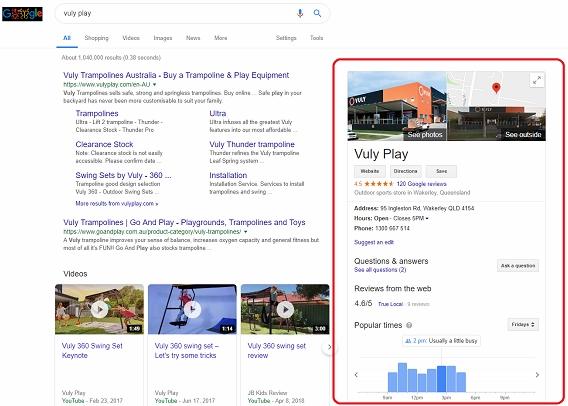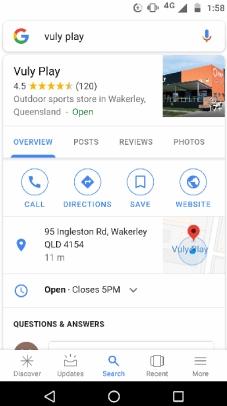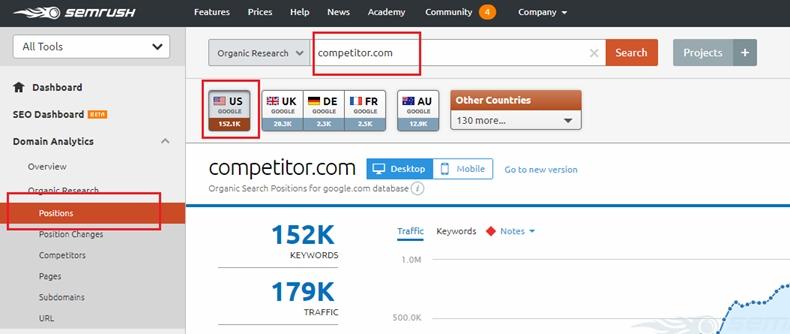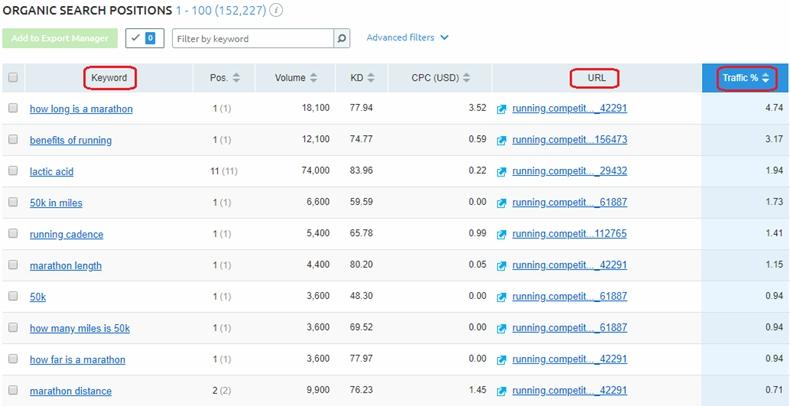Businesses that rely on organic-search visibility for sales and conversions know the importance of SEO. Ranking for keywords in Google search, however, is becoming harder and more time consuming.
But you can still take steps to improve your organic-search visibility and the authority of your business and brand across the Web.
Here are three actions to take to ensure better SEO results, particularly if yours is a relatively new business.
1. Make sure you have a Google My Business listing
A crucial element of success in search is brand awareness and authority: The larger your brand presence on the Web, the more weight Google and other search engines give your ranking for core keywords.
A Google My Business listing is the first step toward building such a presence, so it’s surprising just how many businesses have not created one.
The first step in this process is to search for your brand or company name using Google search. One of two things will happen with the search result:
- There is no Google My Business Listing on the right-hand side of Google search results page (on desktops) or underneath your homepage search result for your business (on mobile device).
- A Google My Business Listing will be presented that has been automatically created by Google and so you’ll need to claim access to it.


Examples of my company’s Google My Business Listing for desktop and mobile
You can then create or claim ownership of a Google My Business listing by going here and entering in your business name. You then have the option to create your listing or claim an existing one.
Important: With the creation of a Google My Business listing, your business will now be open to Google Reviews from users. Customers will now be able to leave positive or negative feedback that will appear in your listing.
Further enhance your brand and trust with your customers by asking them to review you on Google. In fact, positive reviews are one of the most important local ranking factors, so this in itself is an actionable tip!
You can also respond to both good and bad reviews as a business owner. Your interactions with business reviews is an important trust signal for potential customers researching your products and services.
2. Discover your competitors’ keywords and optimize around them
You likely already know that an important component of SEO is knowing what keywords to target on your site, based on what your customers are searching for.
Conducting keyword research for this purpose is a skill in itself, requiring the use of software to derive the information you need. Although Google provides its own free Keyword Planner for this purpose, its data can be inaccurate (unless you are spending a required amount on its paid search platform, Google Ads).
Many other tools provide keyword search volumes, but most will require you to have at least some knowledge of what your customers are searching for within your industry.
A quicker and easier method of identifying applicable keywords for your website is discovering what terms bring search traffic to your competitors.
SEMrush offers a great tool for this purpose, allowing you to analyze current ranking keywords of competitors and their websites. Though SEMrush usually requires a monthly payment, you can create a free account that will provide you enough data to get started.
Once you have created an account and logged in, select Domain Analytics > Organic Research > Positions from the right-hand sidebar menu.
From there, copy your competitor’s homepage URL and paste it in the top Organic Research field. Also make sure the correct country region is selected:

Search for results before scrolling down the page to see the competitor’s top-ranking keywords. Also provided is the URL ranking for that term and an approximation on how much organic traffic it generates compared with other site pages:

Now you have an understanding of what is bringing search traffic to your competitor’s webpages. It’s time to do some optimization on your own website with that data.
Start by checking whether you have any current pages on your website that are relevant to the top competitor keywords you have identified with SEMrush. If you do, you can go in and start making updates. If you don’t, then this is the perfect opportunity to create a new page for this purpose.
In SEO and keyword targeting, it doesn’t need to get overly complicated. Review your current pages and site structure and determine the following:
- Does your current content cover information related to the top keywords?
- Do your webpages use a logical URL structure that covers these keywords?
With those two points in mind, review your current webpages, their content, and URL structure. Keep it simple and consistent.
For example, our company uses a basic two-level subdirectory site structure, connecting the relationship between product category and individual product. That allows us to target our top exact match keywords on one page, and then related terms on the other.
- The www.vulyplay.com/en-AU/trampolines Trampoline category page targets the broad keyword “trampolines.”
- The www.vulyplay.com/en-AU/trampoline/ultra Trampoline product page targets associated trampoline keyword terms.
If you visit those pages, you’ll see that we have kept them focused on the keyword: We haven’t mixed product types or other information that wouldn’t be relevant to our targeted keyword.
So, what can you check to optimize your own web pages?
For basic optimization, consider the following:
A. Update the webpage’s title tag
The title tag is a key component telling search engines what your page is about, and it heavily influences what keywords it ranks for.
Best-practice is to place your keyword at the start of the title tag while also keeping in mind its overall character length (long title tags appear truncated in search results, which is not good for the user).
Consider this format for your title tags: <main keyword> | <secondary terms / info> – <brand>
You may have to make adjustments depending on the character length, but the most important takeaway here is to use the main keyword for the page at the start of the tag whenever possible.
B. Update the webpage’s main heading
The main heading of a webpage should be an either exact match of your targeted keyword or very similar to it. It should also be implemented as a H1 HTML header tag, if possible, and it should come before the body of your page’s content.
Additional subheadings and header tags can be used to break up your content and provide additional opportunities to use related keywords. (For more information on main and supplementary headings, read this.)
C. Update your content with the keyword
Include your keyword in your content naturally, not in a forced manner. The crucial word here is “naturally,” so write content for the user rather than a search engine.
Never spam the keyword or variations of it within your content, but also don’t fully neglect your keywords. Use them when it makes sense to do so.
You’re better off limiting the number of times an exact match keyword is mentioned in your content, instead including a broader range of related terms. You can find good related terms by checking out an LSI (latent semantic indexing) generator, such as LSIGraph.
3. Create local business citations and ‘starter’ backlinks
Outside of creating your Google My Business listing, ensuring you have a range of relevant, local business citations is a smart way of helping search engines trust your brand and business.
This process involves using a consistent NAP (Name, Address, Phone Number) whereever your business is mentioned or listed on the Web. The perfect place to start establishing your NAP is by utilizing local and niche business directories.
Many of those directories will list your business for free, and also provide an option to include a range of business information, such as email and website address.
The other benefit of directories is that most provide a backlink to your website. Although they are often not the most authoritative of links in terms of SEO value, they are still an excellent starting point for new websites.
However, it’s important not to go overboard with directory listings. You should be listing your business citations on only relevant and trustworthy sites.
A good list of directories and other website sources is provided by citation service provider Whitespark. View its top citation sources by country and best citations by industry. Those websites would be a good place to start listing your business citation and website address.